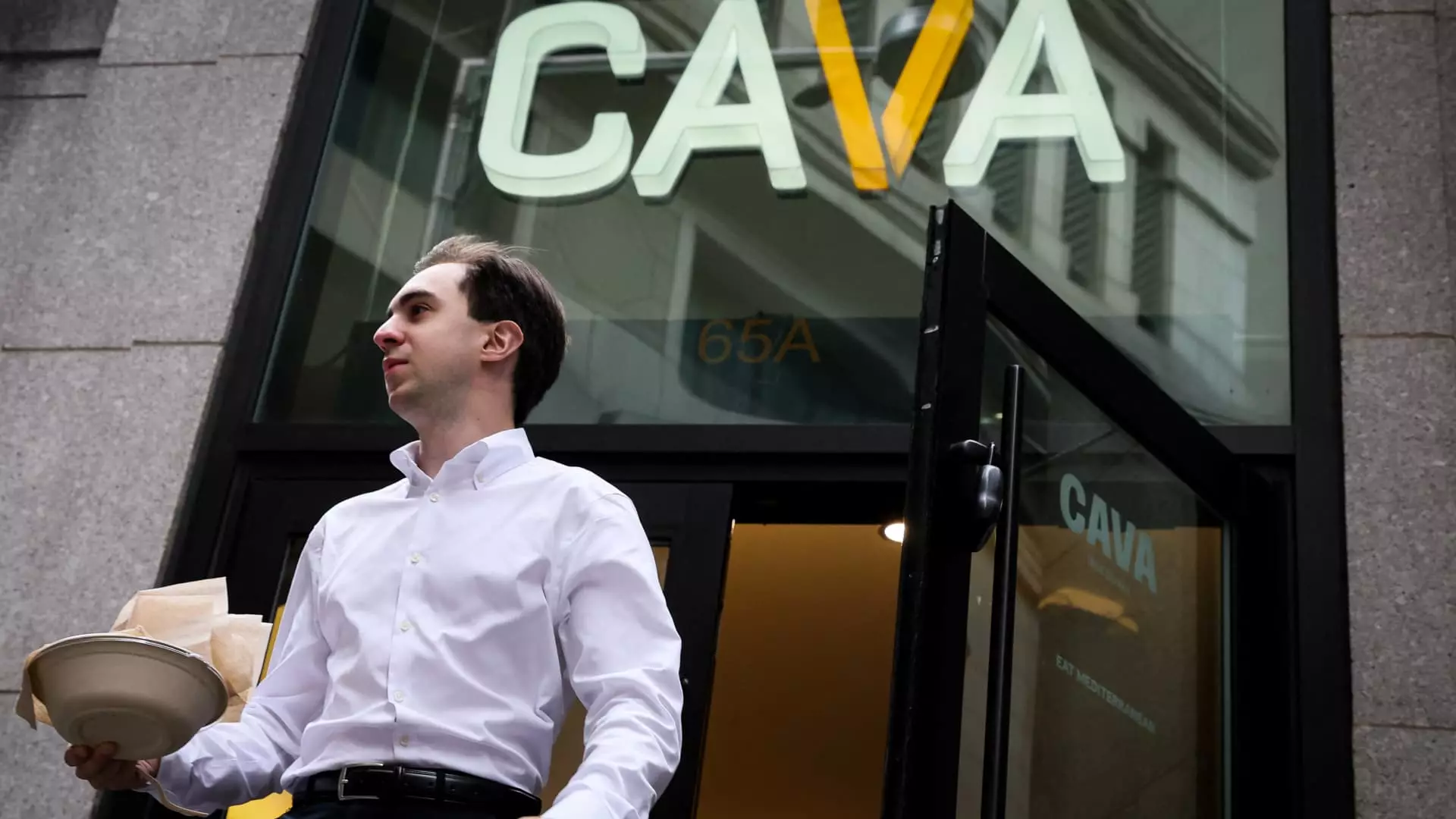In a climate where much of the restaurant sector is grappling with declines in consumer spending and an evident shift in dining habits, Cava has remarkably carved out a niche that seems almost immune to the broader malaise affecting its competitors. The Mediterranean fast-casual chain reported a 10.8% growth in same-store sales in its latest fiscal quarter, directly challenging the pessimism entrenched in the industry. It’s a bold statement, not just for Cava but for the fast-casual model, which many thought was on the verge of stagnation as consumers pinched their wallets tighter amid economic uncertainties.
This kind of resilience prompts an exploration of what Cava might be doing differently, especially as rivals such as Chipotle and McDonald’s report diminishing transaction numbers. Cava’s strategy seems to lie in its capacity to attract consumers who are eager to make a trade-off: an upgrade from fast food to a healthier, more flavorful dining experience. As Chief Financial Officer Tricia Tolivar pointed out, there’s been a noticeable shift toward higher-priced premium items, indicating that while consumers are indeed cautious, they are also willing to invest in quality over quantity.
The Art of the Upgrade
What’s particularly insightful about Cava’s quarterly performance is the trend of “trading up” that Tolivar highlighted. This indicates more than just individual consumer choices; it reflects a larger movement where diners are seeking better value propositions. For many, this means substituting traditional fast food for something that delivers not only sustenance but also satisfaction and experience—elements that Cava has effectively infused into its menu of bowls and pitas. The appeal of fresh, high-quality ingredients combined with innovative flavors allows Cava to rise above the noise of economic despair.
The stark contrast with other establishments like Sweetgreen, which reported its first quarterly decline since going public, underscores the dynamic nature of consumer behavior during economic uncertainty. It seems that Cava is capitalizing on a critical insight: while consumers may be tightening their belts, their appetite for better dining experiences remains intact, albeit with a more discerning approach. Rather than a complete retreat from dining out, there’s a nuanced selection process at play, suggesting a shifting landscape that could redefine the industry’s recovery.
Investor Skepticism and Economic Factors
Despite these stellar results, Cava’s stock fell 5% in after-hours trading, demonstrating that market confidence can be stubborn and unyielding. Even as earnings surpassed analysts’ expectations, concerns brewed regarding the company’s conservative fiscal outlook. While investors may be cautious, the underlying metrics suggest that Cava is equipped to navigate these uncertain waters better than most of its peers.
However, there remains a nagging question: Will the current consumer enthusiasm hold? The company’s reiterated same-store sales forecast of a 6% to 8% increase signals a careful approach to growth, perhaps sensing a potential slowdown post-surge. While Cava raises earnings projections, it also concedes to a more subdued outlook in the second half of fiscal 2025, reflecting broader economic concerns that seem to haunt the restaurant industry as a whole.
Cava’s decision to plan for the opening of 64 to 68 new locations further emphasizes its ambition. This growth trajectory, in spite of investor skepticism and fluctuating consumer behavior, is a statement to the potential resilience and relevancy of the brand in the increasingly competitive food landscape.
The Future of Fast-Casual Dining
As Cava continues to break through the din of industry woes, it serves as an intriguing case study in the evolving dining ecosystem. The company’s ability to increase average customer spend and attract a diverse clientele across geographical and economic lines showcases its adaptability and the consumer’s desire for healthier dining options that do not compromise on flavor.
Yet, should this trend wane, Cava’s growth will face challenges akin to its competitors. Still, as it stands, Cava offers a beacon of hope within a struggling sector—a reminder that innovation and quality can set a brand apart, even during times of economic hardship. The key takeaway from Cava’s performance so far is clear: consumers are not just looking to fill their stomachs but are on the lookout for dining experiences that resonate with their evolving tastes and values. Whether this will be enough to sustain momentum remains to be seen, but for now, Cava has proven to be a formidable player in the landscape of fast-casual dining.

Leave a Reply